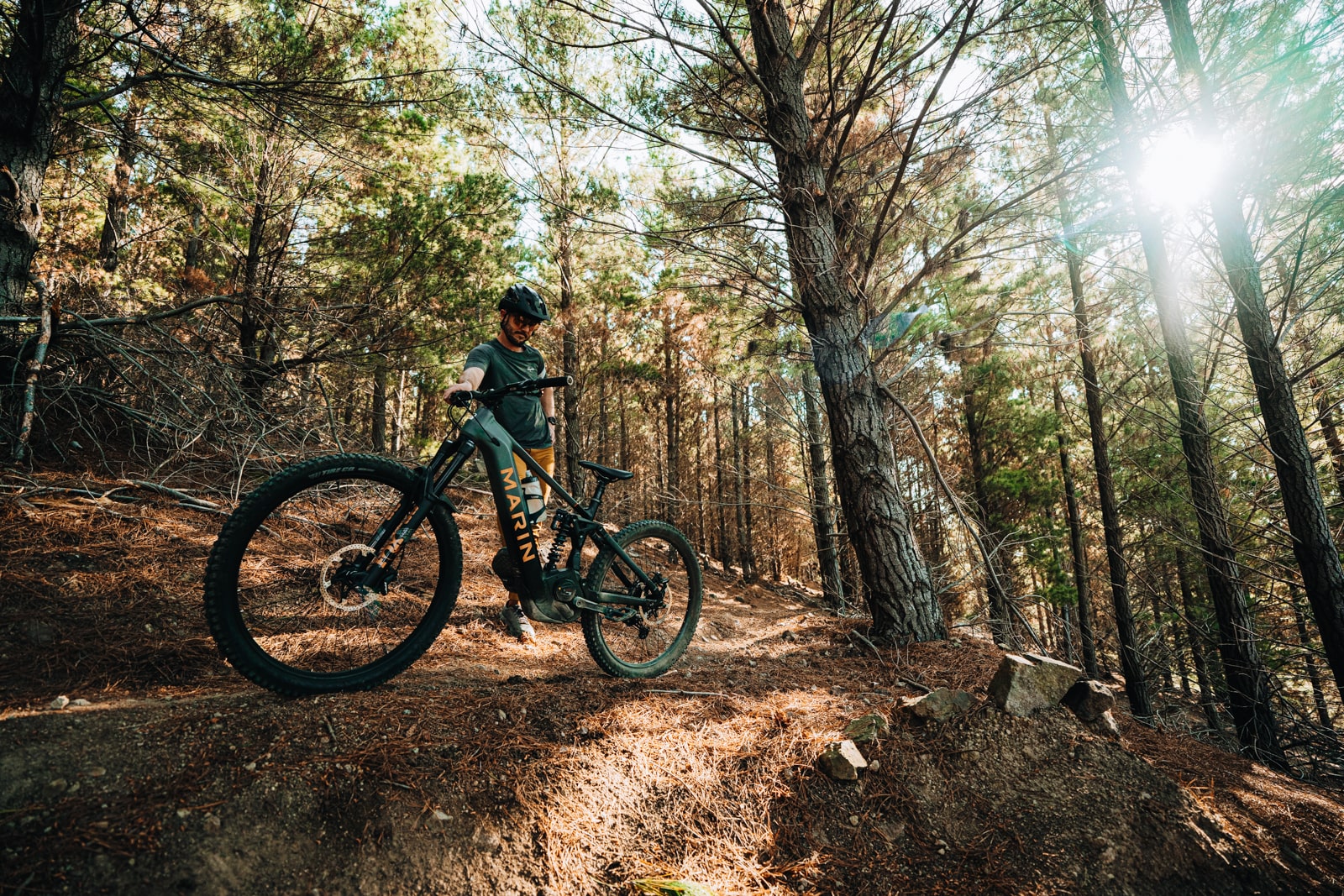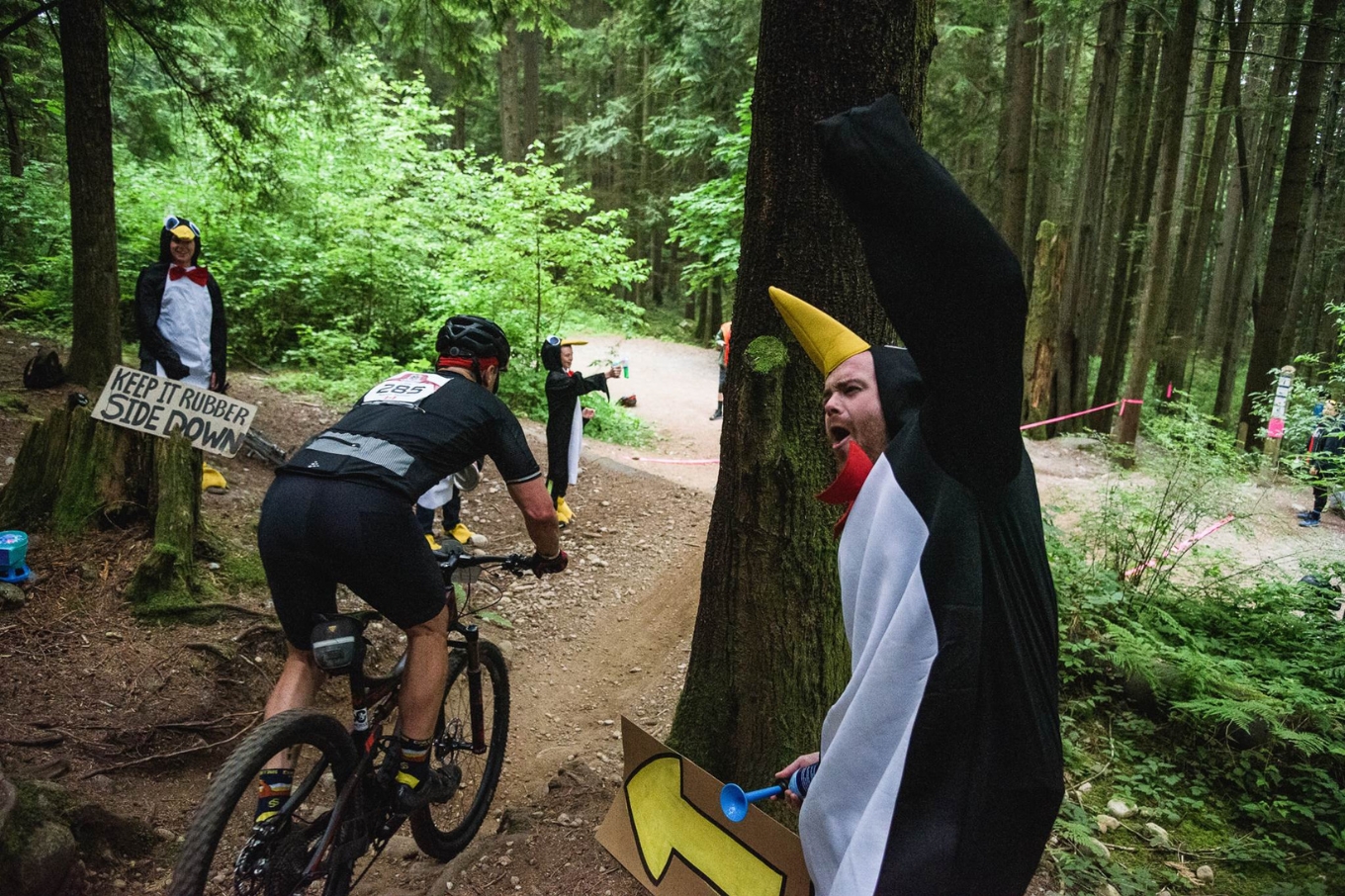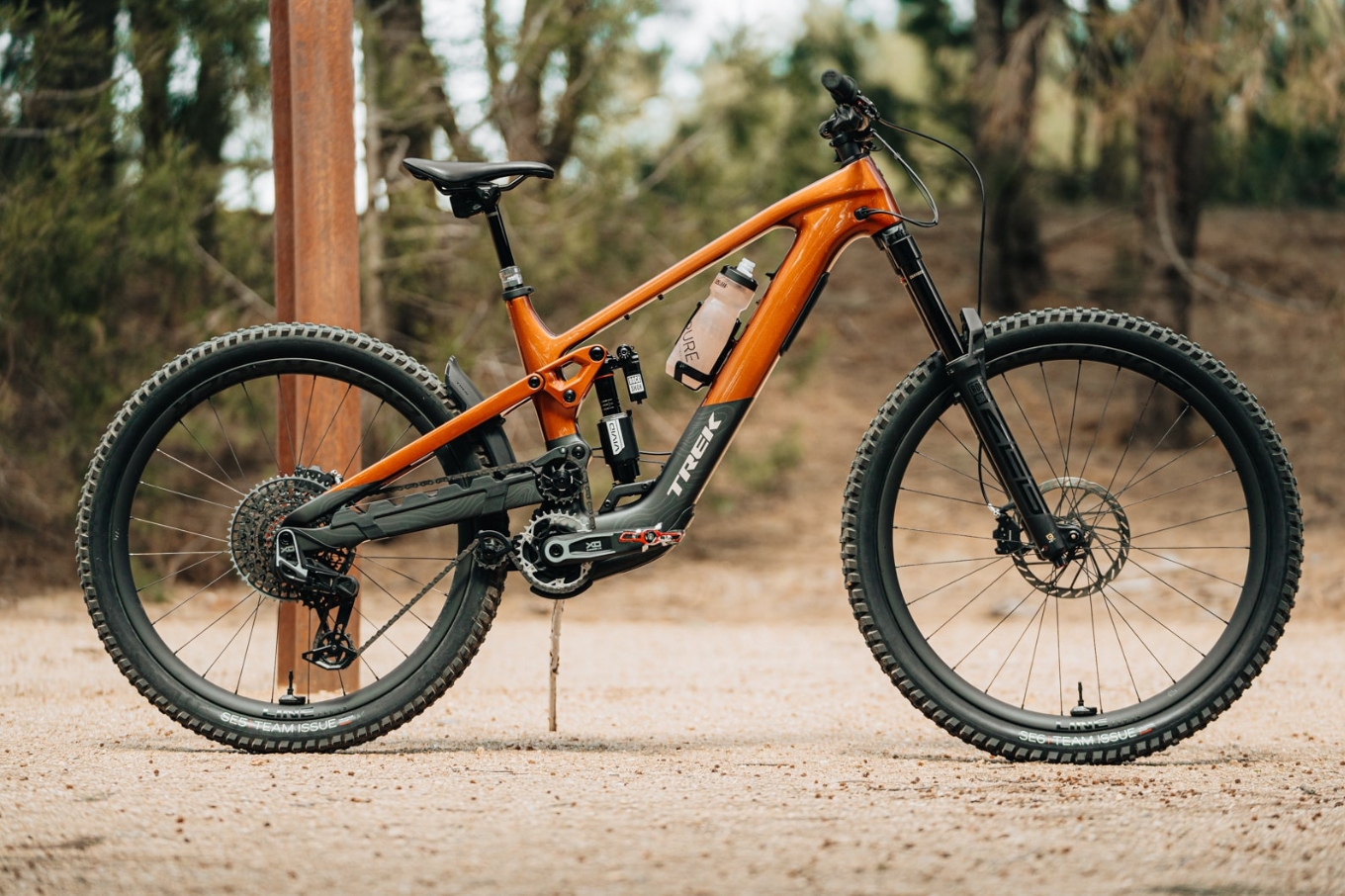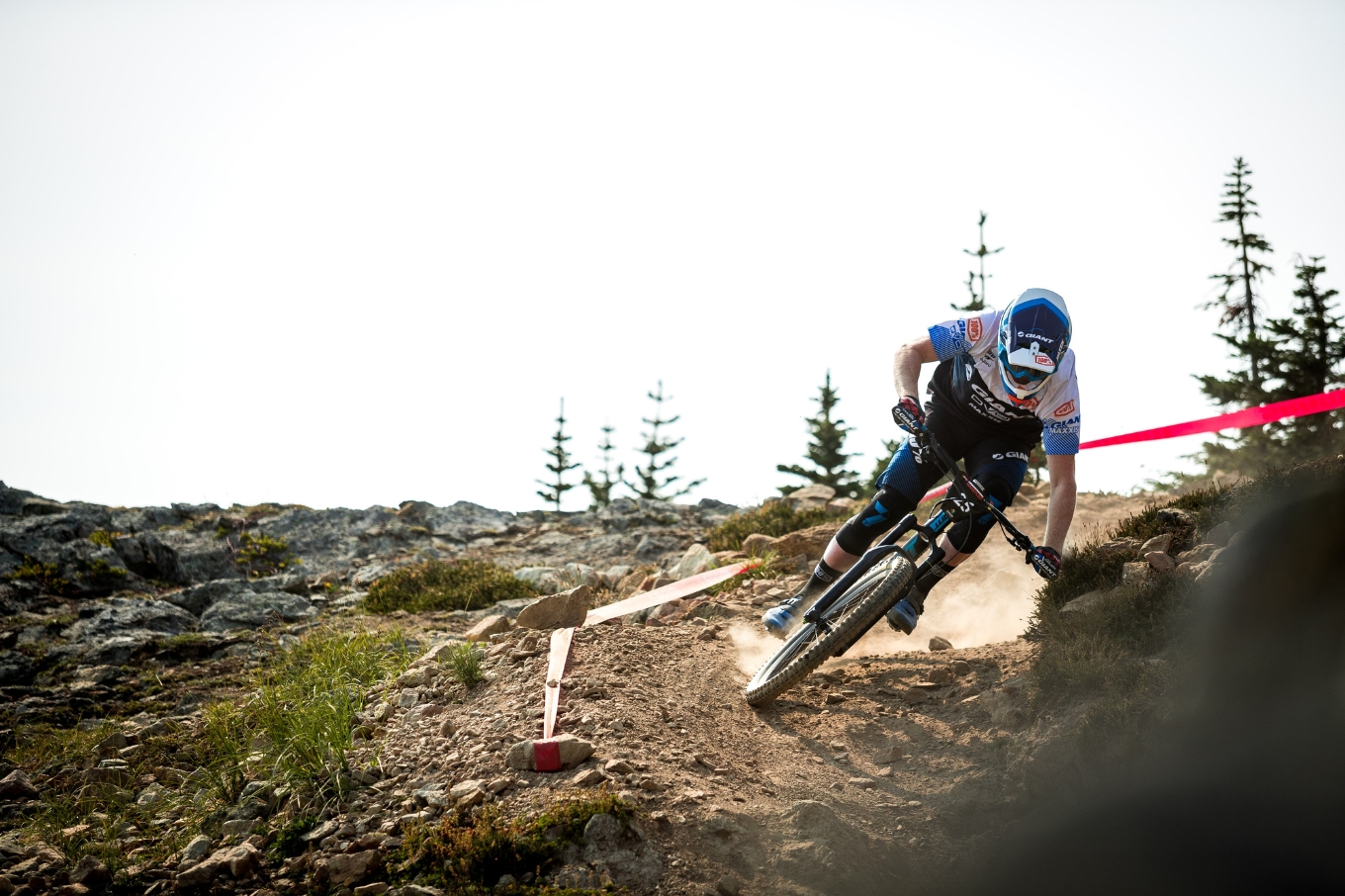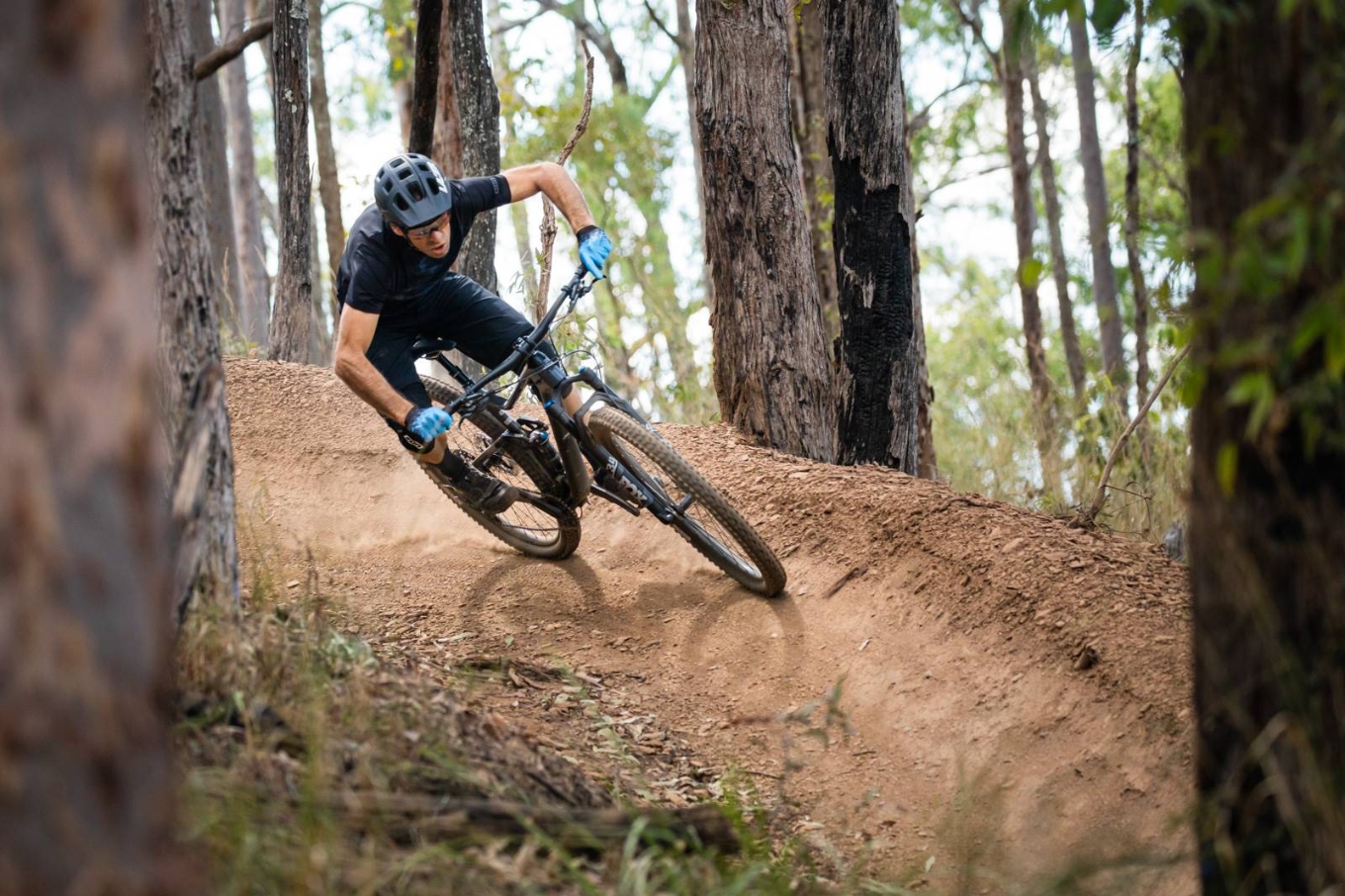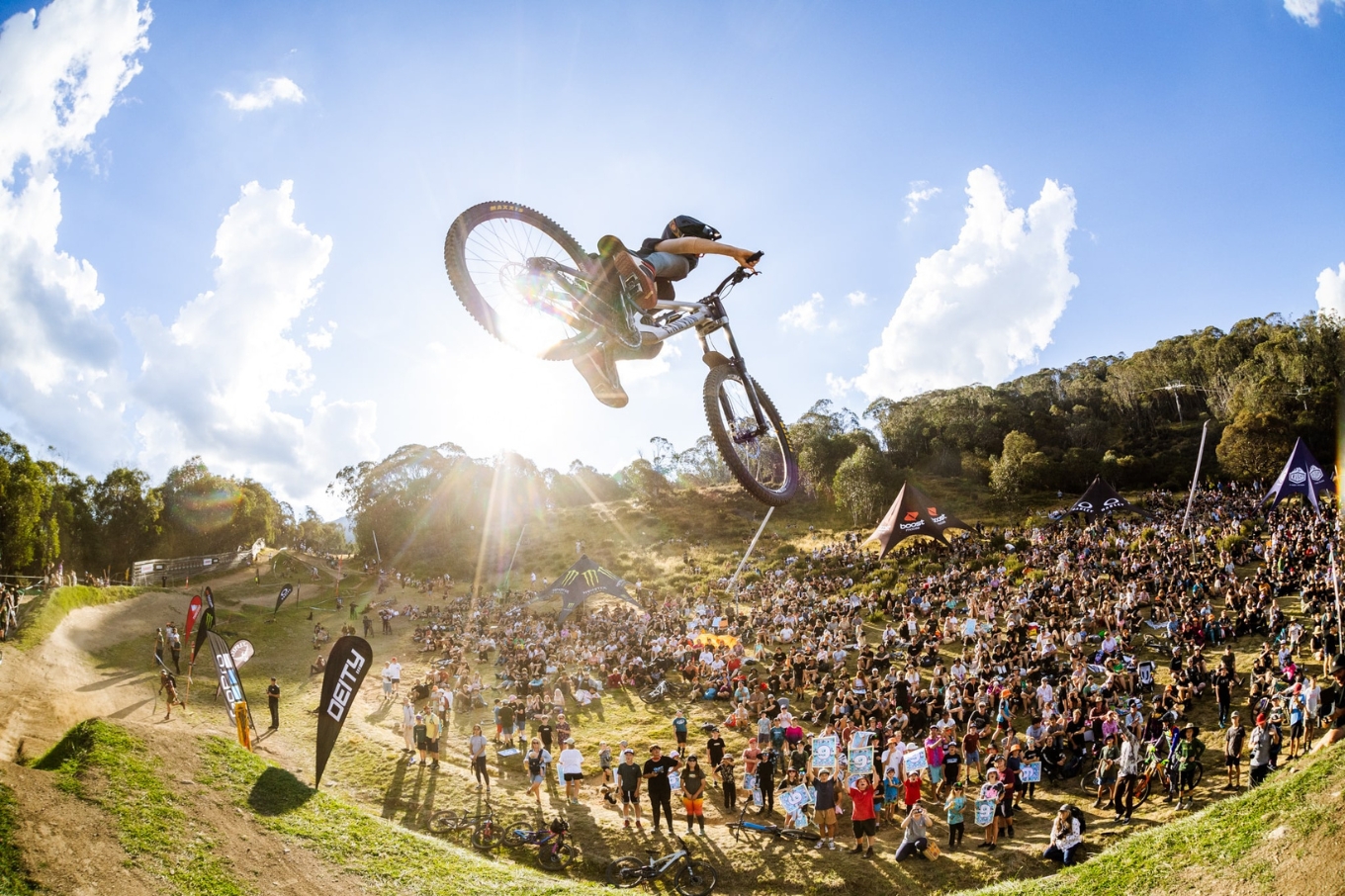Tested: Trek Slash 8
The Trek Slash 8. Just like the carbon models, only better… possibly.
Words: Ben Morrison Photographer: Nick Waygood
The Trek Slash 8 left off were the previous generation of Slash started with only some geometry tweaks setting it apart at first glance. We say this because at first glance you have no idea this is an alloy frame! Trek have done an outstanding job keeping the smooth and very clean lines that the carbon Slash has. Trek’s Slash 8 should not be overlooked – especially if you are in the market for a 29er trail/enduro bike or even toying with the idea of one.
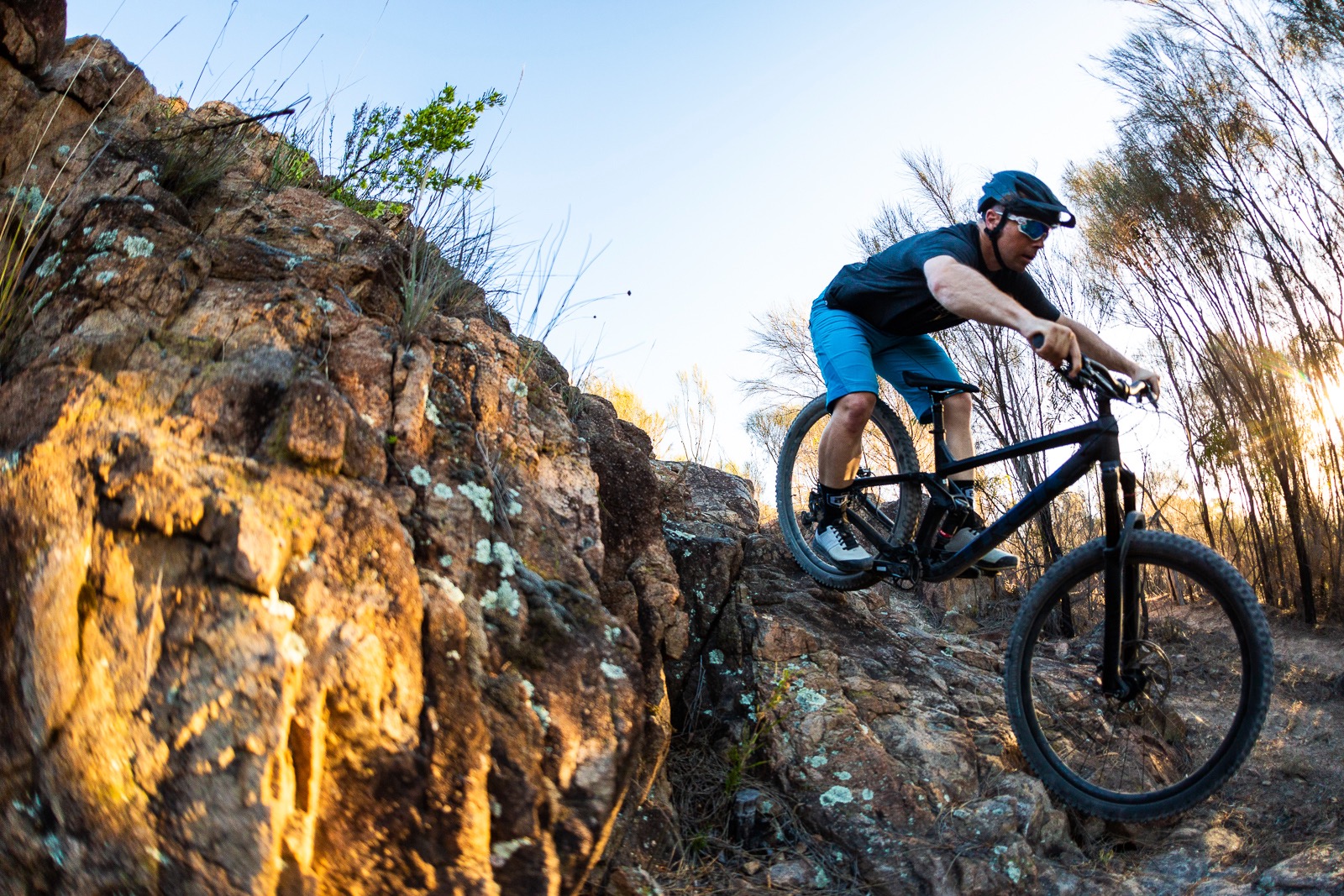
It would be really easy to give a short review of the Slash 8 saying “it’s bloody awesome, just go ride one no matter your wheel preference”, because that is what was going through our mind on the first outing on this big wheel bandit. When developing the Slash 8 Trek made a few minor changes to what was already perhaps one of the best 29er trail/enduro bikes on the market.
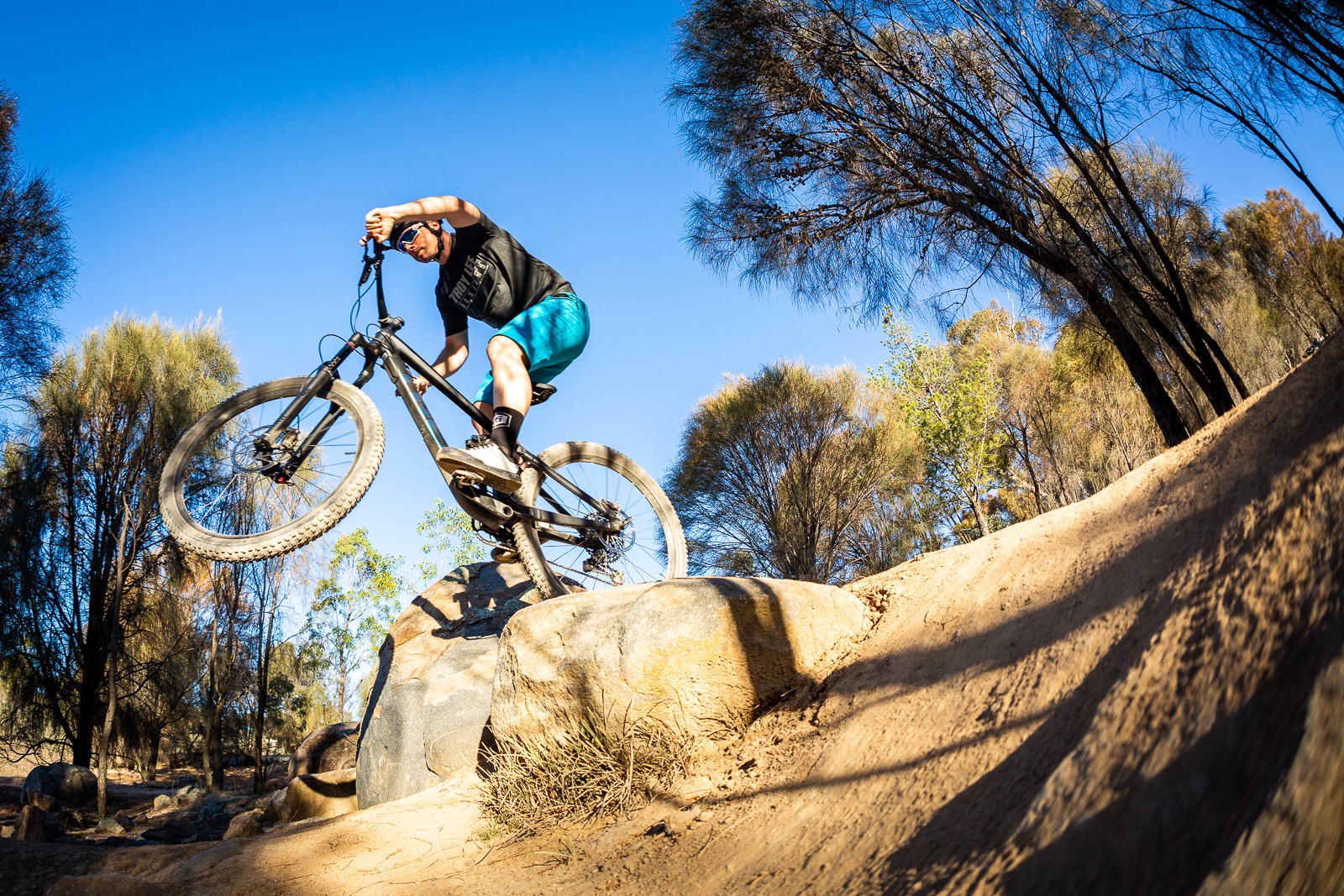
Other than going to an alloy frame (meaning our test bike was priced at $4,499 – which is $1,500 -$2,000 less than you could get a Slash in the past as it only came with a carbon frame) Trek did the same thing that transformed the Remedy which was to steepen the seat tube allowing for much smoother and more comfortable climbing. Previously, this is the only gripe you would hear from Slash owners. Clearly Trek has taken notice and made the change when introducing the alloy frame to their Slash range.
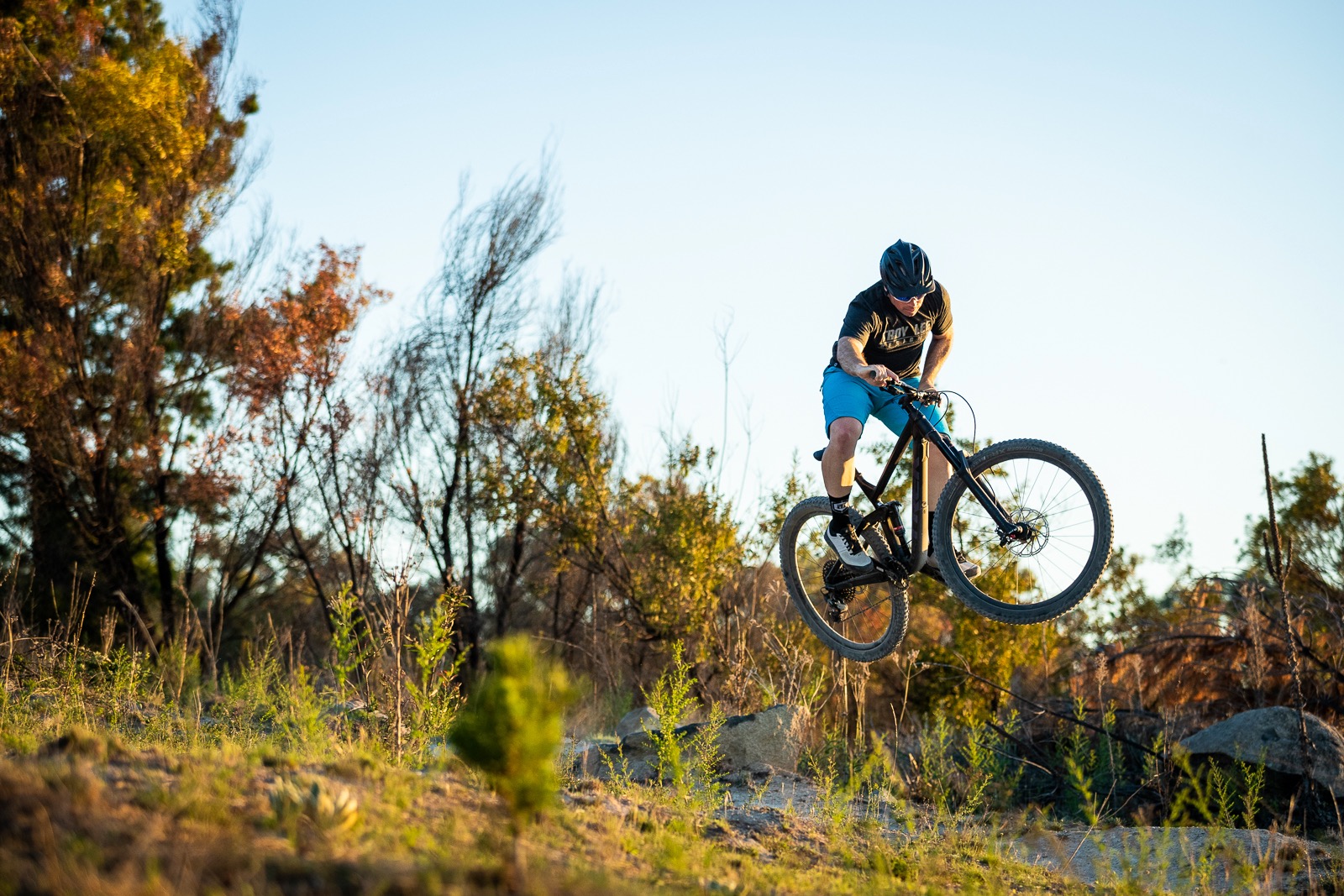
The thing about Trek is that they just simply work. They also look good, but are not wildly different and nowadays they have refined their bikes so much that it’s hard to get excited about them until you ride one. Noting also that it’s highly probable that Trek owners are heavily contributing to selling more of this brands bikes than all of the Trek sponsored riders and marketing campaigns put together – purely because they are the folk saying ‘oh mate, I love my bike, you should have a go’.
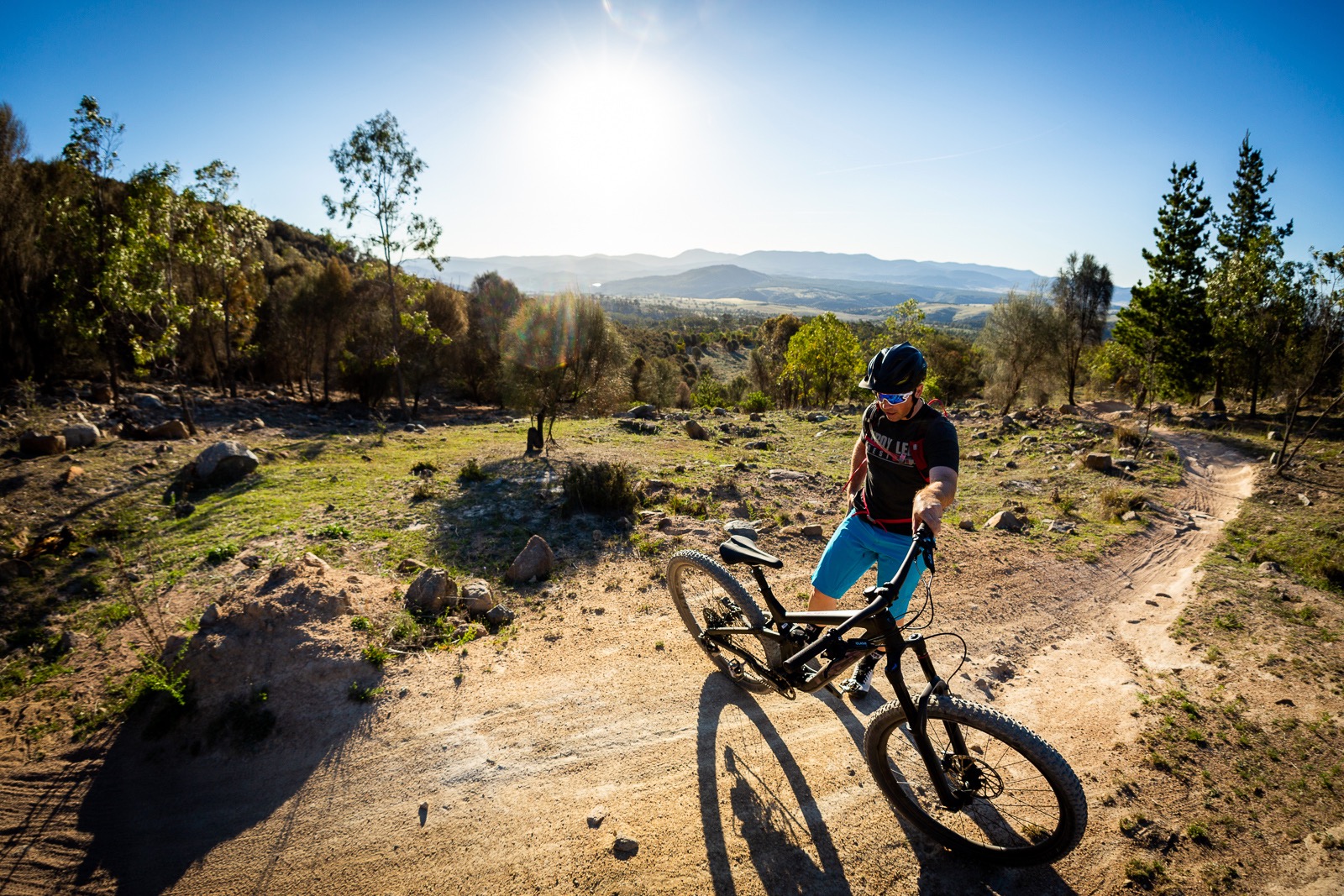
Just like Volvo cars – they look so much better than they ever have in the past, they’re not cheap, and it’s the Volvo driver that gets you behind the wheel and actually makes you think that ‘this is a bloody great car; but am I a Volvo driver?’ Trek’s Slash 8 is just like a high performance Volvo Polestar – it looks good but isn’t in your face with its styling and shape, but once you let it do what its deigned to do, you can’t help but smile on the inside and almost feel a little dirty thinking is this right?
First Impressions
Sticking with this refined no-nonsense approach Trek use a few key features that help it stand out via tech that actually works and basically just makes sense. The first of these are Knock Block and the Straight Shot Down Tube. Now these might be unique to Trek but they don’t scream out when you first see them. Knock Block is a headset and stem that when paired with a Trek frame that has a stop chip installed means that your bars will never spin around in the event of a crash.
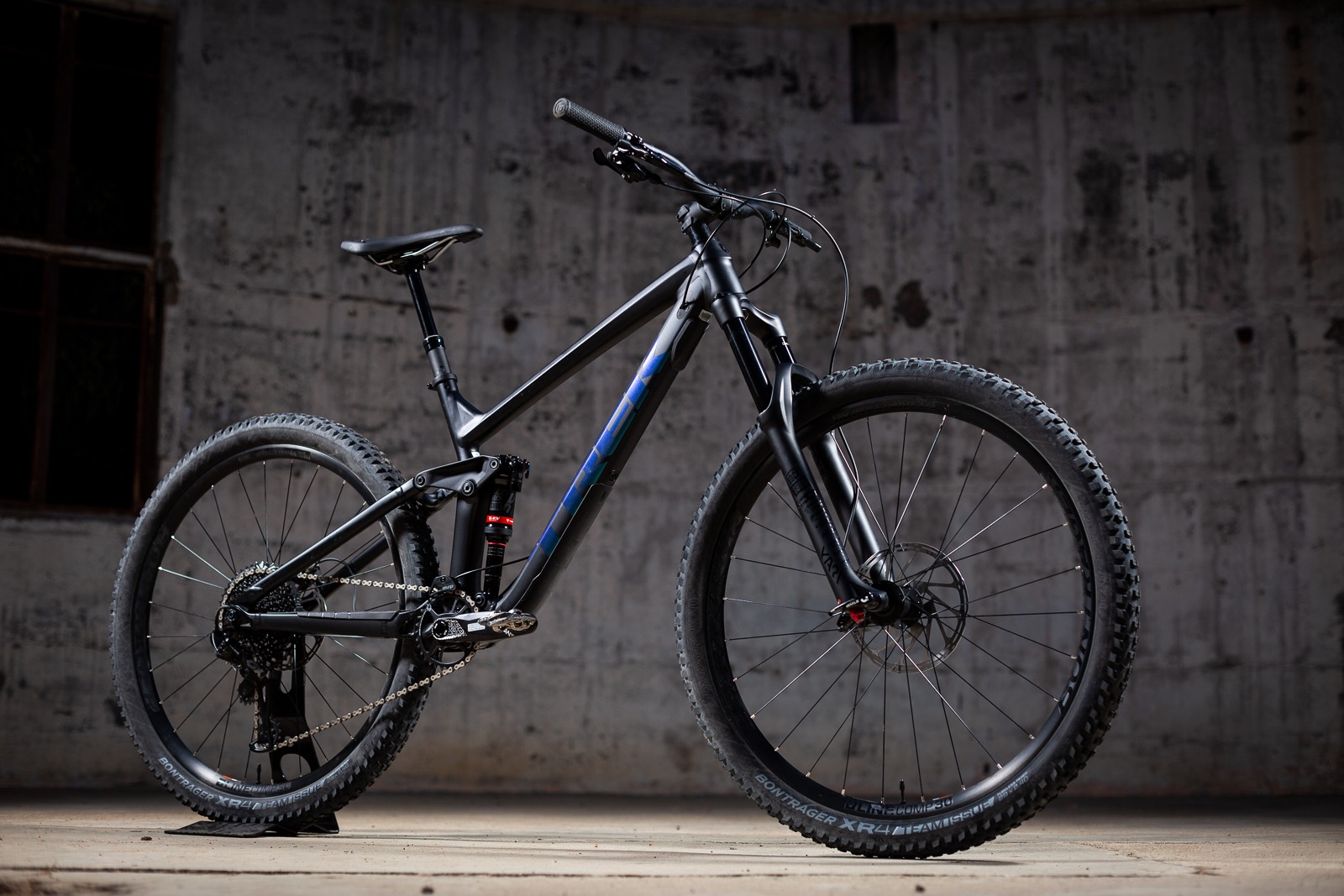
Knock Block was developed when Trek implemented Straight Shot Down Tubes on their bikes, removing the curve we see on other bikes allowing the fork to spin around and pass under the frame in a crash. The result of this is a stiff, light frame that gives you much better steering control over your bike at speed and in rough terrain. Another thing that is just smart and simple is Cable Freak (which was probably called Adjustable Cable Management Entry until the marketing team at Trek got hold of it and pointed out that the Road Runner had a patent on ACME). What this does is allow you to cleanly adjust how many cables come into each entry point so you can set your bike up the way you like and lock them all into place, making a quiet, rattle-free ride.
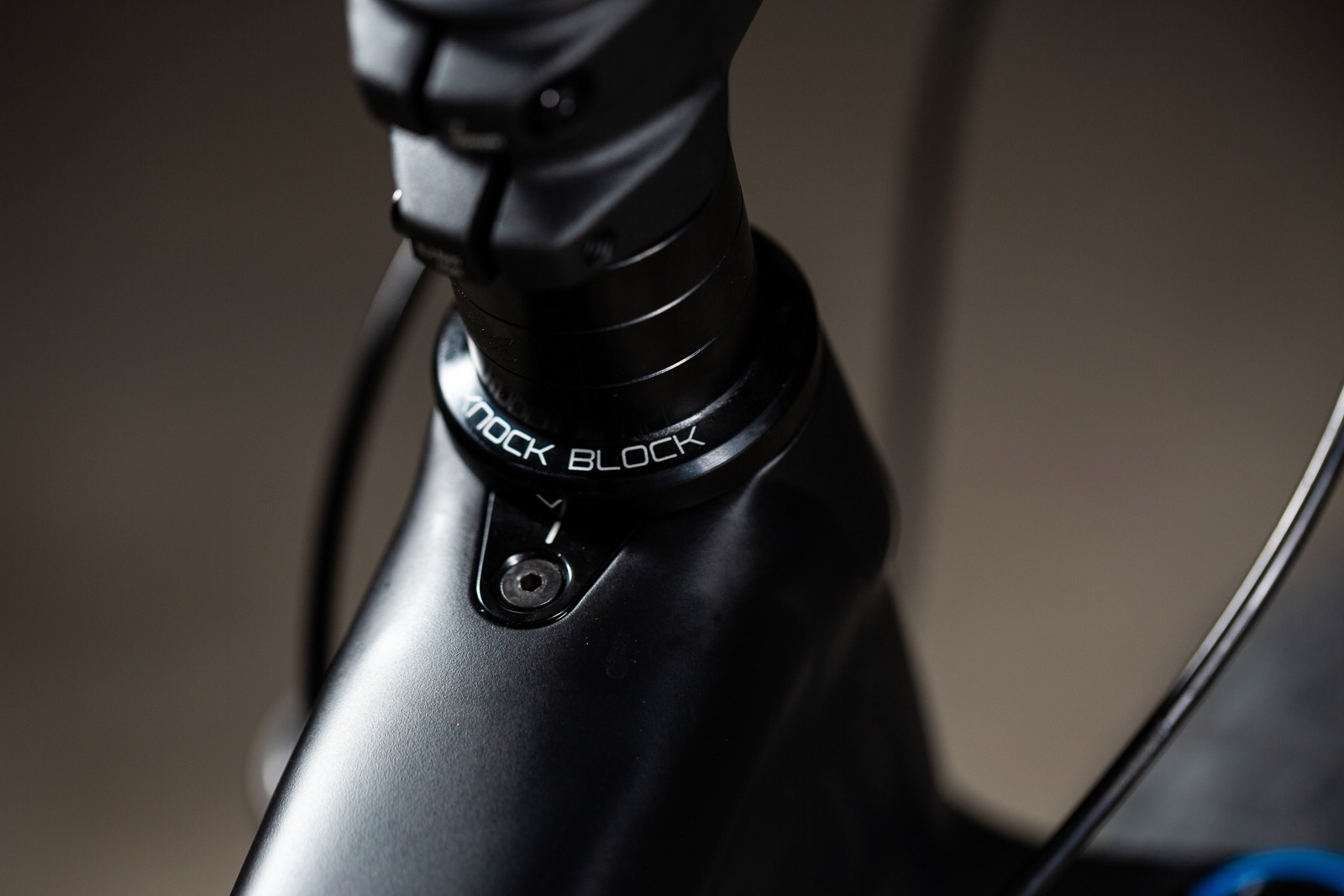
You will of course, also see some standard features like the well proven ABP (Active Braking Pivot) that makes the suspension work so well on Trek bikes and is honestly very hard to fault other that it is rather bulky leaving the rear axle open to damage from rocks.
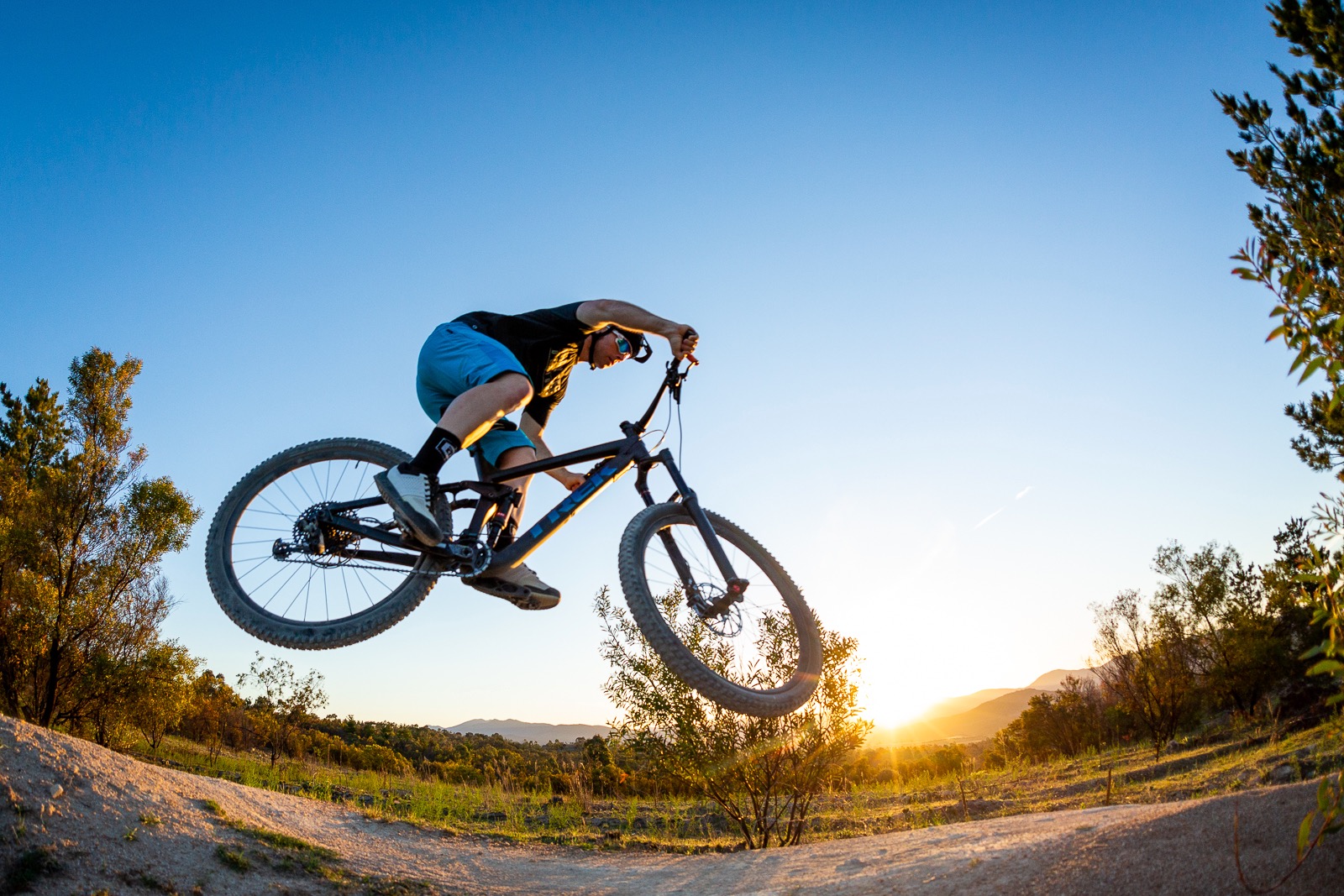
Another now standard feature on all Treks is Mino Link, which allows you to adjust your head angle by half degree and the BB height by 10mm. Very handy and easy to use, but perhaps a bigger range of adjustment might be nice here as the Mino Link has no effect on the suspension; so why not push the extremes, because the Slash 8 is a very willing subject when it comes to searching for limits on the trail.
Bikes That Just Work
One of the spec standouts on the Slash 8 is that you get the same rear shock as you get on the top of the line Carbon Slash. This shock is a colaboration between RockShox and Trek which is the next level of their RE:aktiv rear shock that was developed with Penske Racing (who have a background in high performance F1, Indy and Nascar racing). This next level includes what is called Thru Shaft (which gives you a much smoother and less restricted rear shock) giving you that same small bump absorption out of your air shock that you often find related to coil rear shocks, without the weight penalty.
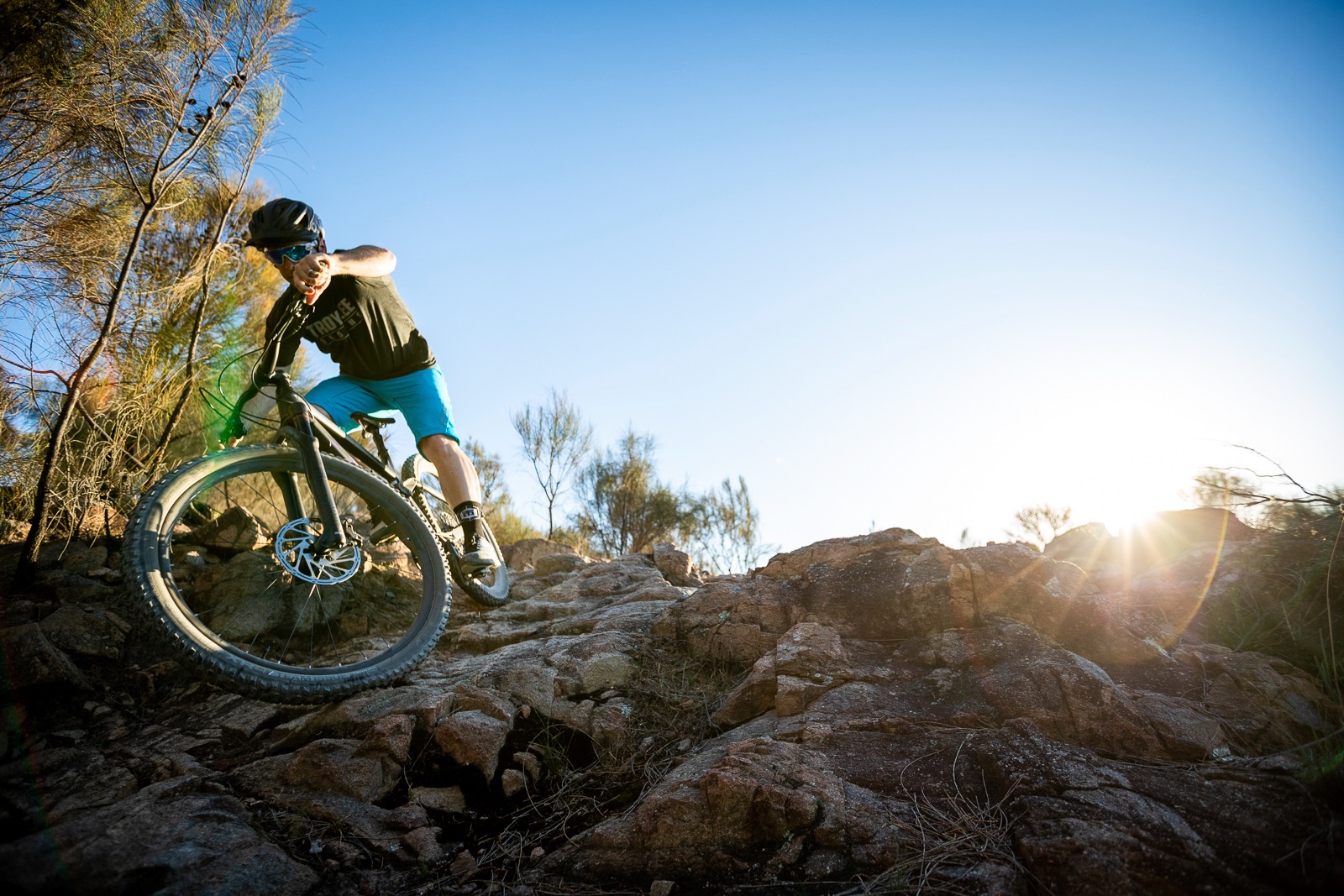
From here you will find some of the industry’s standard go to specs which provide some great value and equally abundant performance. This comes in the form of SRAM GX Eagle – perhaps one of the most common group sets on the market and for good reason : it’s reliable, quiet and does not cost the earth to replace when the time comes.
See how a pro enduro rider Ben Forbes sets his Trek Slash up for racing HERE
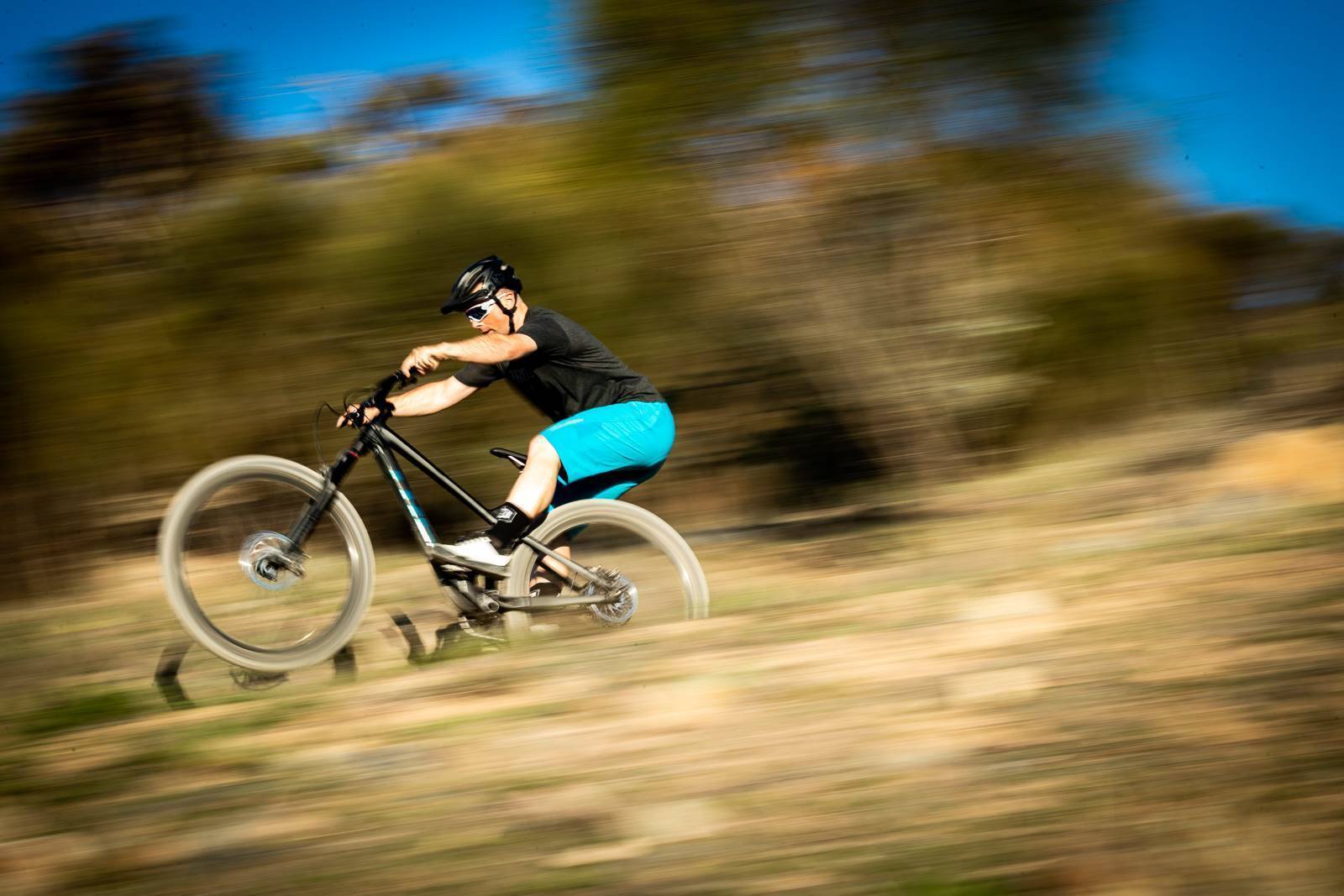
You will also find the ever popular Guide brakes – a favorite among riders these days and they have proven to be very reliable and are just as easy to work on. However, the Guide R is perhaps also the biggest downfall of the Slash 8. Bike manufacturers please please please stop putting organic brake pads in bikes that are going to be pushed extremely hard by riders. Or, at the very least, put metal pads in the front. Yes they make noise, but the power and performance gains far outweigh this. For the same money a set of Guide RE brakes (Guide lever on the old Code caliper rebranded for E-bikes), even with organic pads, would have been a much smarter choice. Bikes like the Trek Slash 8 are so good at descending, they need the brakes to match. Time and time again we are finding ourselves not being able to push the bike to its potential due to poor spec choice when it comes to brakes by bike manufactures.
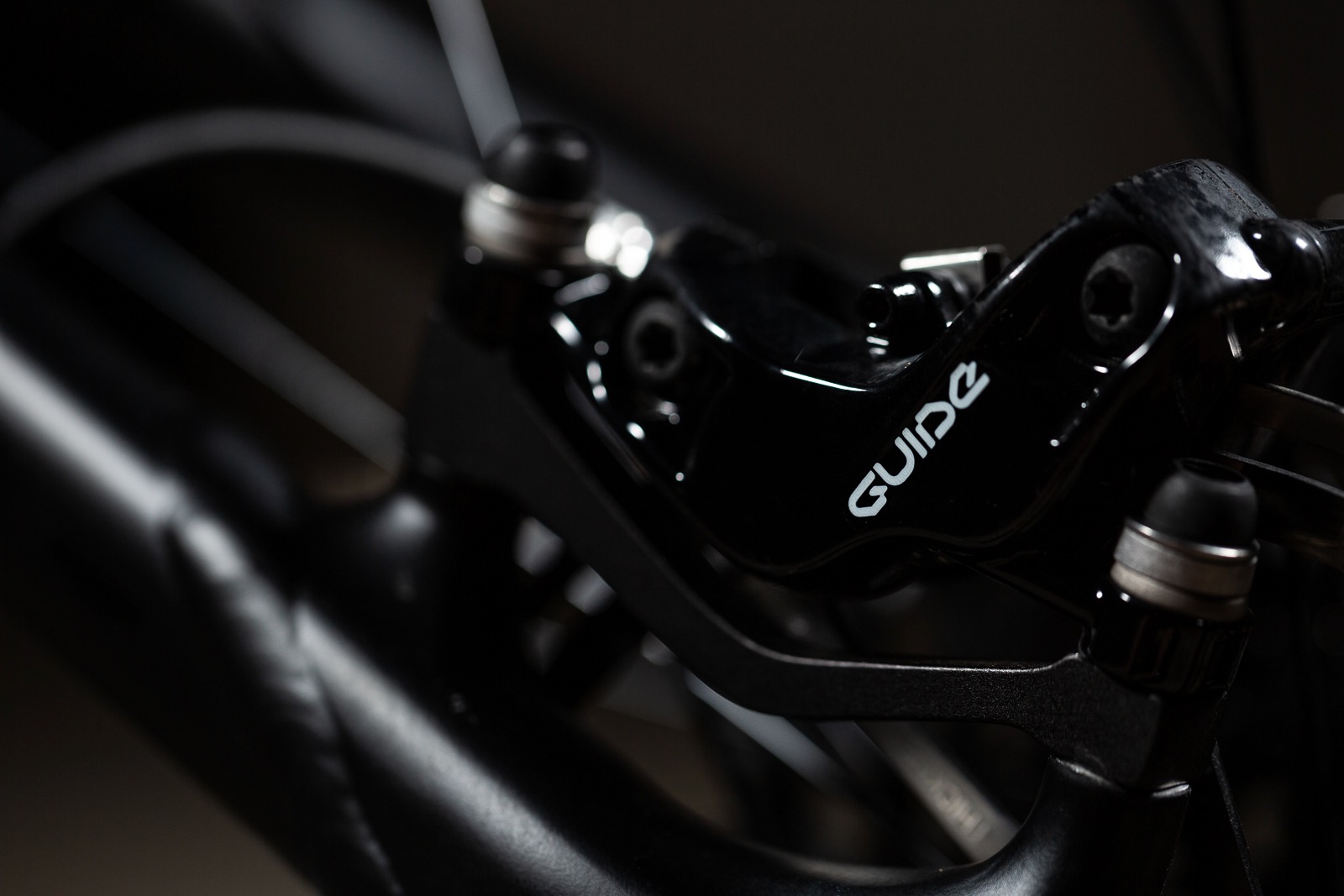
For this one, however, we’re on the fence: Trek’s tyre selection for the Slash 8. The Bontrager XR 4 Team Issue are very fast rolling but with fast rolling comes fast turns and likewise the need for grip – which the XR 4 was somewhat lacking. Switching the XR 4s for a set of SE4 Team Issue would do wonders for offering better grip and more peace of mind in the rocks with a thicker sidewall.
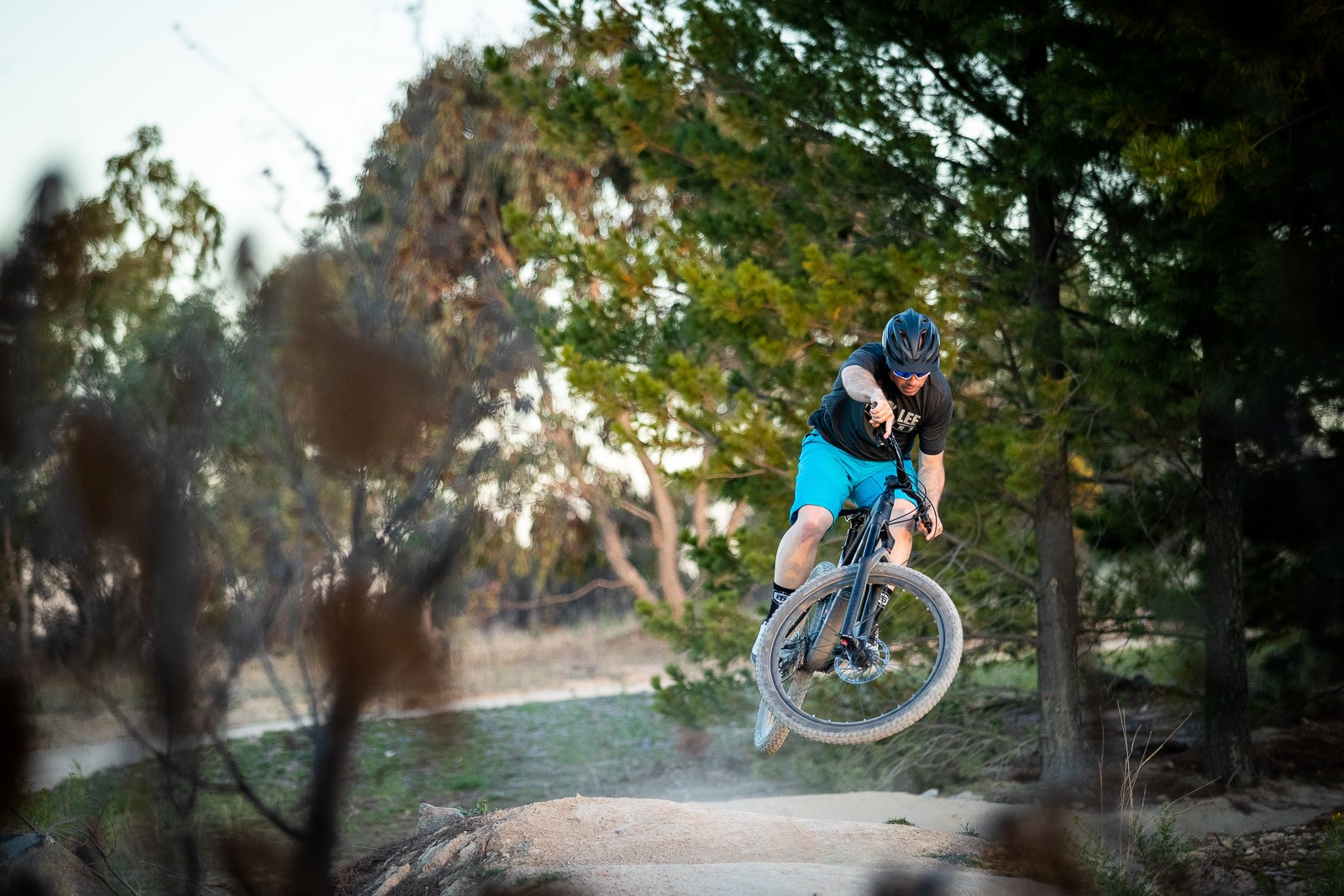
Other spec highlights for the Slash 8 include the Line Dropper Post from Bontrager which has been improved so much from the first time we used one and the 150mm travel from it was a nice option on our 19.5” bike.
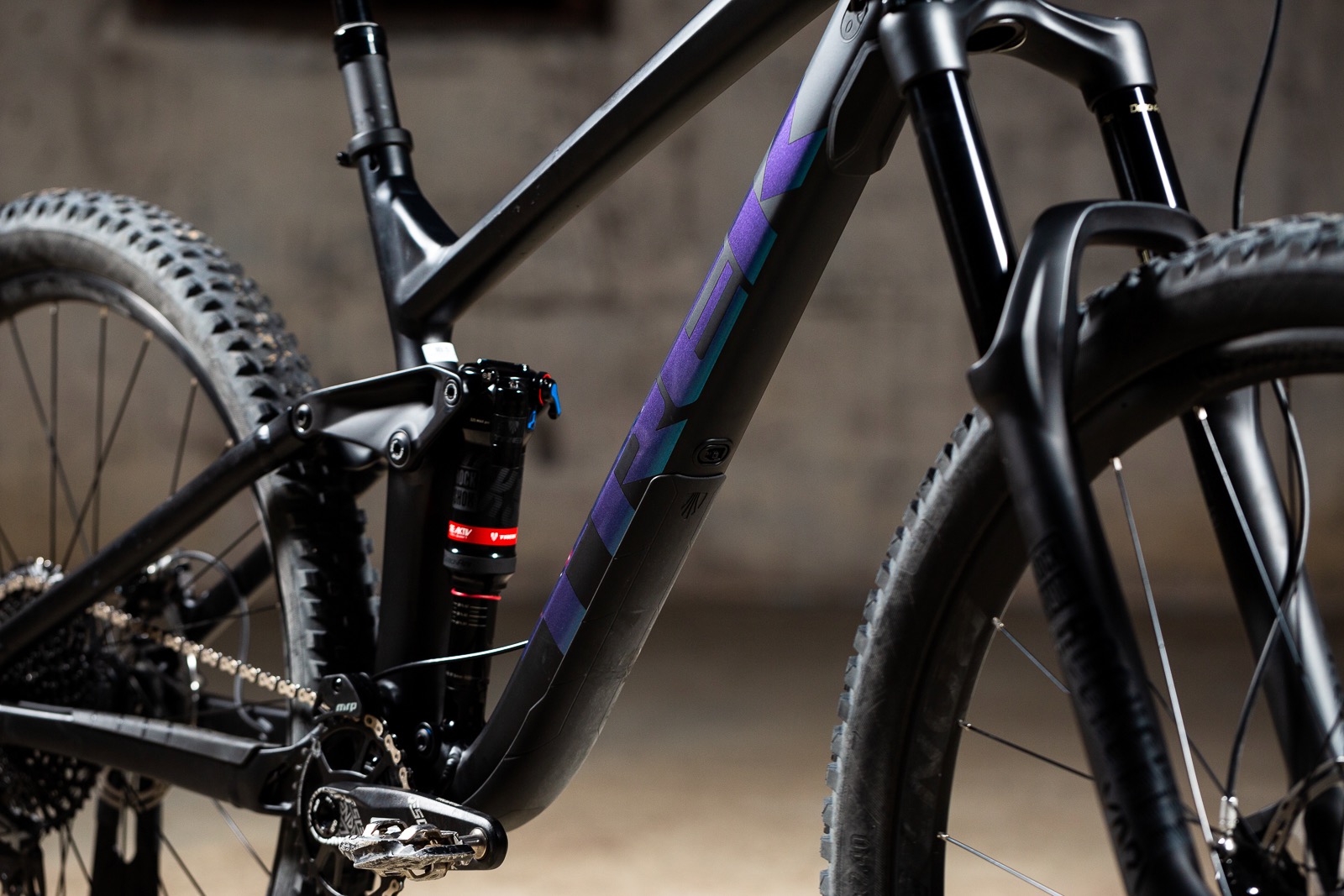
Other standouts included the RockShox Yari RC Fork with the new DebonAir spring. This fork is a bit of a head-turner and offers so much smooth performance across its 160mm of travel, you do have to check to see you didn’t happen to get a Lyrik on your bike by mistake in the factory. It really is that good for the price. Do yourself a favour, and with some of the money you saved going for the Slash 8 over one of the carbon models, buy the Yari Charger 2 Damper Upgrade Kit and you will find very little that will stand in your way of a good time, every time, when you hit up some rough sections on your new Slash 8.
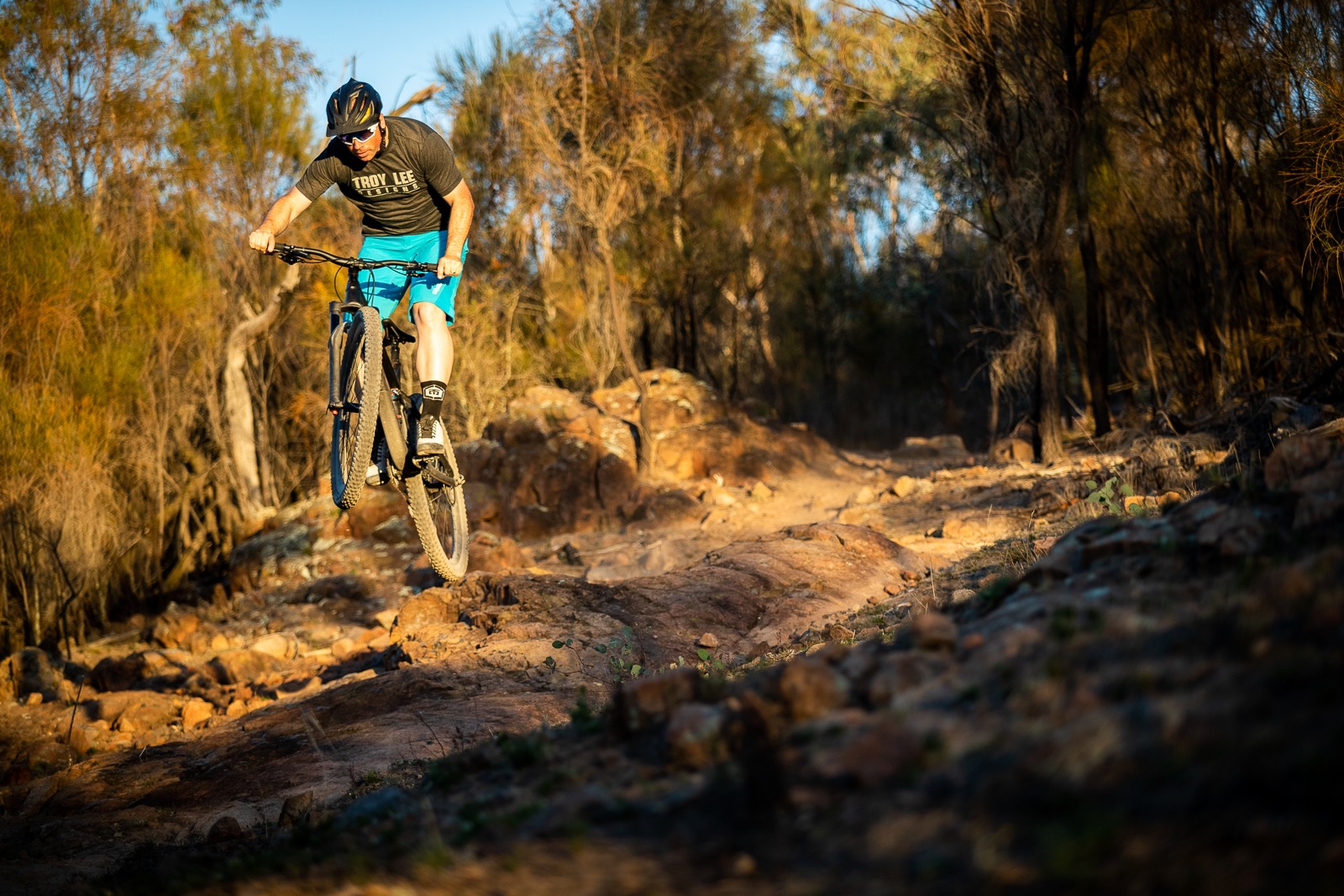
Like we said at the beginning – Trek’s Slash 8 is a great bike and you really need to ride one to understand why it’s so hard to put into words and much easier to put into smiles, laughs, weird hand gestures and even stranger noises when talking about what you liked about riding the Slash 8.
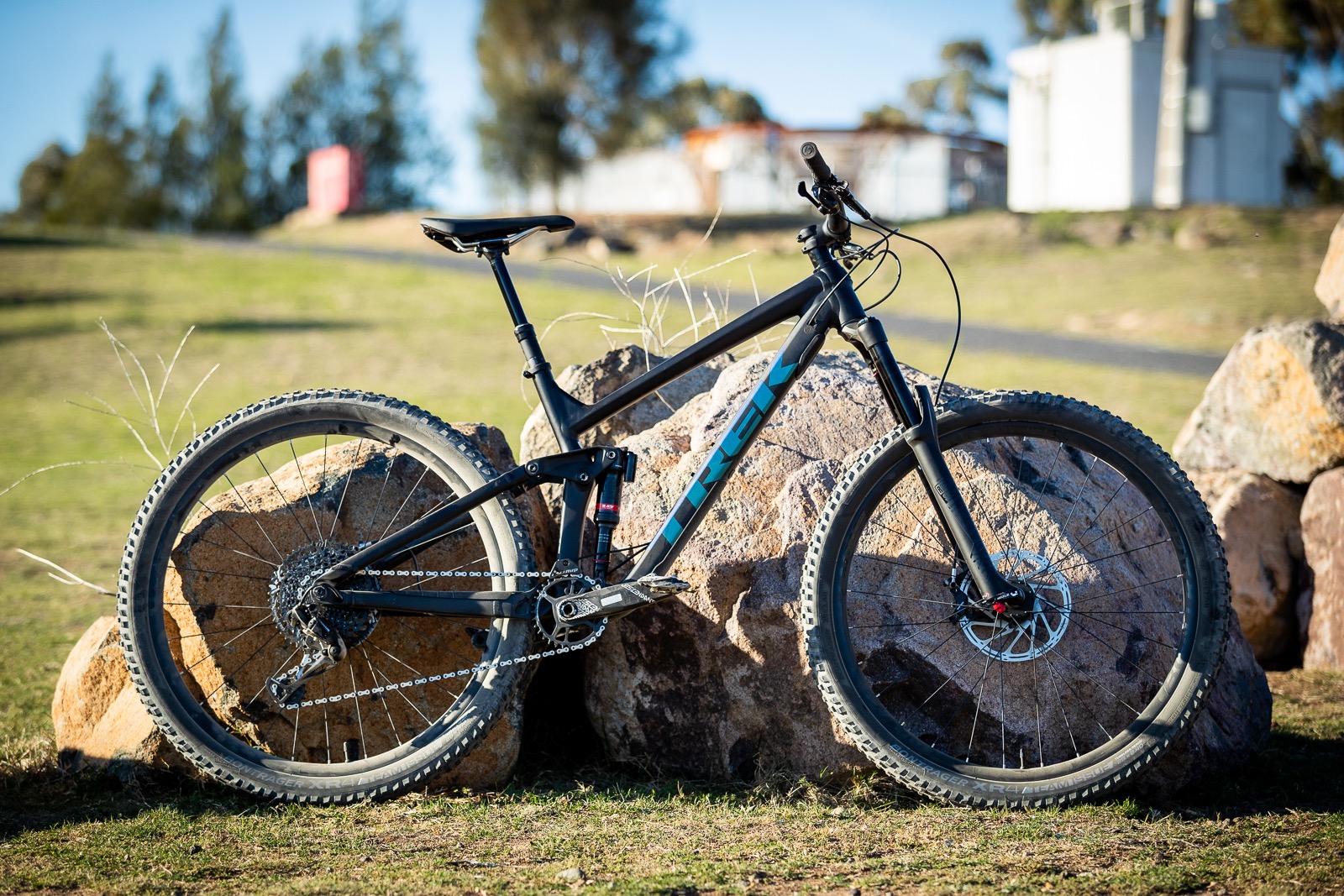
Brand: Trek
Model: Slash 8
RRP: $4,499.00
From: trekbikes.com
Available Sizes: 17.5”, 18.5”, 19.5”, 21.5”
Frame Material: Alpha Platinum Aluminium
Fork: RockShox Yari RC, DebonAir, Motion Control RC, Boost 160mm
Shock: RockShox Deluxe RT3, RE:aktiv with Thru Shaft 3-position damper, 150mm
Shifter: SRAM GX Eagle
Derailleur: SRAM GX Eagle
Crank: Truvativ Descendant 6k Eagle DUB
Bottom bracket: SRAM DUB Press Fit, 92 mm
Chain: SRAM GX Eagle
Cassette: SRAM XG-1275 Eagle, 10-50, 12-speed
Hubs: Bontrager Line Comp 54T Rapid Drive, Boost110 front, Boost148 rear,
Spokes: steel
Rims: Bontrager Line Comp 30 alloy, Tubeless Ready
Tyres: Bontrager XR4 Team Issue 29×2.4”
Brakes: SRAM Guide R 200/180mm
Stem: Bontrager Line, 35mm clamp, 50mm
Handlebars: Bontrager Line, 35mm clamp, 27.5mm rise, 780mm wide
Seatpost: Bontrager Line, 150mm drop (size 19.5 frame)
Saddle: Bontrager Arvada, hollow chromoly rails

